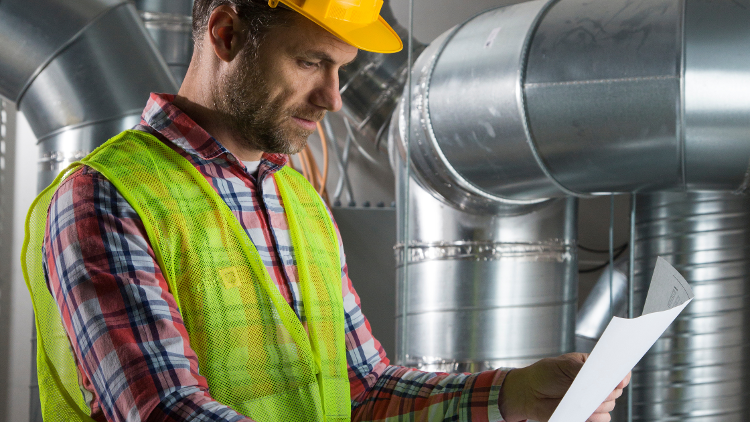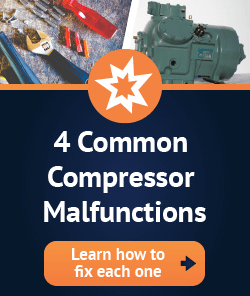Your workplace depends on your commercial HVAC system. Whether it’s an office, hospitality property, or anything else, you can be certain you’ll hear about if the HVAC isn’t working the way it’s supposed to.
A commercial HVAC system uses all the same engineering principles of a residential HVAC. Same principles, but bigger. The average commercial HVAC can incorporate different technologies and will usually have much greater demands depending on the industry.
Many commercial HVAC systems never shut down and may have substantial periods of peak usage. They also face seasonal challenges. An HVAC system might work hardest in the summer, but a frozen evaporator coil can still bring it down during the winter.
If Your Commercial HVAC Is Struggling, It’s Probably Not the Compressor
If there is one positive thing about commercial HVAC maintenance, it’s this:
Your problem usually isn’t traceable to the commercial HVAC compressor itself.
A commercial HVAC compressor is a large and costly piece of equipment that may offer limited opportunities for field repair. If they really broke down as often as people worry about it, we would all be in trouble!
Luckily, unless your compressor is deep into the last third of its 8-10 year lifespan and has already given you cause for concern (in the form of unreliable performance or rising electric usage, for example), it is almost a guarantee the root of your HVAC problem is found elsewhere in the system.
And that almost always means something you can fix.
Common Commercial HVAC Problems You Can Solve In Just a Few Steps
1. Evaporator Coils Frozen
If your evaporator coils freeze, the blower fan will struggle to get air through the coil and is in danger of overheating. The HVAC as a whole will work harder to reach the target temperature, putting more stress on the compressor. Check to ensure your air filters are clear and refrigerant levels are sufficient.
2. Blown Fuse
While fixing a blown fuse is as simple as replacing it, it’s important to take a closer look at what’s really going on. Frequently blown fuses may point to an electrical issue. If your building is older, the wiring may be at fault. You can narrow down the source of recurring issues with the help of an electrician.
3. Blower Runs Constantly
If the thermostat is in the “auto” position and the blower is running nonstop, you may have a stuck fan. Check for a blockage near the fan blades. If you can’t detect any debris, you might be able to get the fan running again by gently sliding a stick between the blades and giving the fan a push. If it fails the “stick test,” it is more likely it is mechanically seized and must be replaced.
4. Thermostat Problems
Problems can arise with modern smart thermostats just as frequently as old-fashioned systems. No matter what kind of thermostat you have, be sure you are calibrating it on a regular basis. For smart thermostats, clean off all the sensors that the system relies on to gauge the temperature. At times, individual sensors may need to be replaced.
5. Refrigerant Leak
A refrigerant leak anywhere in the system will be heralded by lukewarm air blowing through the vents before long. If the leak is specifically related to the compressor, the compressor will start running much louder than normal. There may be a high-pitched whine. Line isolation tests, infrared leak detection, and fluorescent dye are a few of your options for pinpointing the leak.
6. Dirty Condenser Coil
Dirty condenser coils are one possible culprit when you notice reduced airflow in your business. Lower airflow can create uneven temperature zones, where some areas get significantly less HVAC service. If problems persist after the condenser coil is clean, you may need to replace your HVAC air filters. In the worst-case scenario, there may be blockages within the ducts.
7. Inefficient Burner
Rust, soot, and other debris can build up on heat exchangers, leading to reduced efficiency of the burner. Left unchecked, this could cause additional wear on components throughout the system. Stopping it is as simple as making sure heat exchangers stay clean as part of regular maintenance.
What Happens When Your HVAC Compressor Really Is at Fault?
Once in a while, you might encounter the worst-case scenario: A compressor that’s been damaged by flooding and slugging or another environmental issue. Even a newer compressor can quickly end up on its last legs, but you have the option to help control costs.
With a remanufactured commercial compressor, your existing compressor core is used as the basis of a unit that’s thoroughly tested to perform like new. You can save 30% or more over the cost of an OEM-affiliated wholesaler while cutting weeks off procurement time.












